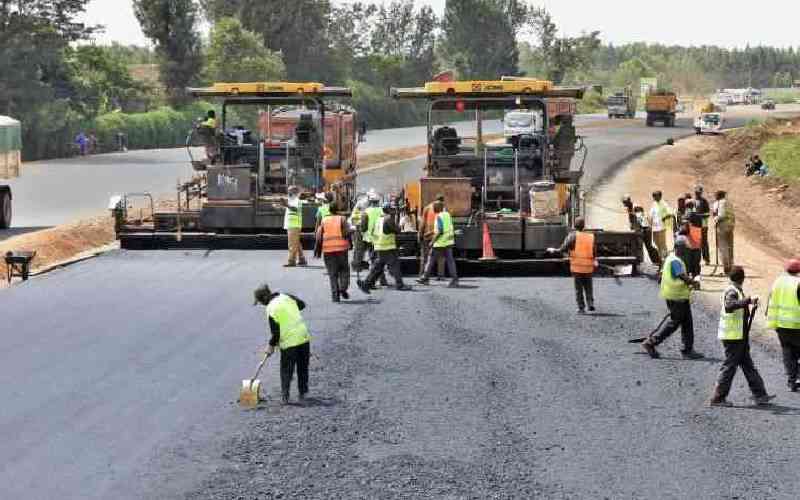It is yet another season that the nation is being treated to political theatrics in revenue sharing between the national and devolved governments after the 2019/20 financial year. Sadly, in all this drama, critical questions about our devolved governance structure have never be asked or addressed. For the avoidance of doubt, let us first understand the objects of devolution.
Article 174 enumerates the objects of devolution as: promotion of democracy and accountable exercise of power; fostering national unity by embracing diversity; appropriation of powers of self-governance and participation of people; rights of communities to manage their own affairs and development; protection and promotion of rights of minorities; promotion of social and economic development; equitable sharing of national and local resources; decentralisation of services from Nairobi; and enhancement of separation of powers, that is checks and balances.
Drafters of the constitution envisaged self-reliant and sustainable economic units at the devolved level. The key questions are (1) Eight years down the line, are there any definitive indicators that our devolved units will ever be economically independent? (2) Are the county bosses and our political elites on the same page with drafters of the constitution?
Having been within the devolution space since 2013, it is a national shame for us to go through this again. Lest we forget, as at the end of the 7th financial year of devolution on June 30th 2020, counties have cumulatively received at least Sh2.3 trillion from various sources as per the Controller of Budget reports. This excludes the extra emergency funds provided by the national government to deal with the Covid-19 pandemic.
The intent of devolution was to prioritise development at the devolved units as opposed to creating consumption centres. If this were true, then by now there should be clear indications that our counties are on progress to self-reliance. However, the grim reality is that safe for Nairobi, none of the other 46 counties can meet their own basic needs from internal revenue. But we also know the county government of Nairobi has demonstrated no confidence and hasn’t been any different.
For the first 9 months of the financial year 2019/20, the counties total internal revenues stood at a meager Sh28.04 billion translating to 48.5% of the annual target. Nairobi accounts for close to 50% of this revenue. Comparatively, this a pale shadow of Sh26.3 billion collected in the first year of devolution in 2013/14 and the highest annual collections of Sh40.3 billion in 2018/19 financial year.
Making sense of this statistics, economic intuition will tell us there is little or negligible economic activity going on in the counties despite the trillions injected into them. Good indicators for vibrant regional economies would be growth on own source revenues, decent employment opportunities for our young people, vibrant industries/businesses, improved household incomes and infrastructure improvements among others.
While we have seen some good effort in some counties, what is more evident across all counties is that the past seven years have created billionaires and millionaires with no known trade in the regions, except having been county employees. They’ve also left a trail of tears, shattered dreams and mounting debts for genuine people and businesses that dared to do business with county governments.
So what is the way forward from this systemic quagmire?
One, while some may argue against the weight allocated for geographic size in the Commission of Revenue Allocation formula, it is naïve and ignorant of the realities and historical facts attendant to some of the counties. The Equalisation fund was set for the first 20 years of devolution to address major infrastructural challenges in these counties. Unfortunately, it has also been dogged by controversy, never been streamlined and Members of the National Assembly have been gravitating for it.
Two, it is incumbent upon citizens and mandated institutions to demand accountability for devolved resources. We cannot agitate for more resources without demanding for accountability on the achievements of the objects of devolution. Truth be told, the scattered county projects across the county cannot account for the 2.3 trillion devolved so far. There must be a demonstration of well structured, sustained and well-intended development agenda, with tangible deliverables.
Three, outside the exuberant manifestation of power on the part of the county bosses, there must be a focused and deliberate effort to drive industry, innovation and creativity to establish semi-autonomous economic entities among the counties.
In all forms of devolved structures like ours, other jurisdictions evaluate the performance of Governors on the basis of the annual County Gross Domestic Product, growth in investments, employment rate and other development indicators. It is a pity after 7 years we are evaluating our county bosses on the basis of the convoy of cars and ‘a cacophony of officials’ around them.
Finally, those who dream of the Building Bridges Initiative as a panacea, I am sorry to burst your bubble. As per the Constitution, the equitable shareable revenue has averaged over 33% from 2013. The proposed 35% or whatever it is, is negligible with the ‘consumptionistic’ mentality manifested by the county leadership right from the inception of devolution.
-Dr Muinde is an economist
Stay informed. Subscribe to our newsletter
 The Standard Group Plc is a
multi-media organization with investments in media platforms spanning newspaper
print operations, television, radio broadcasting, digital and online services. The
Standard Group is recognized as a leading multi-media house in Kenya with a key
influence in matters of national and international interest.
The Standard Group Plc is a
multi-media organization with investments in media platforms spanning newspaper
print operations, television, radio broadcasting, digital and online services. The
Standard Group is recognized as a leading multi-media house in Kenya with a key
influence in matters of national and international interest.
 The Standard Group Plc is a
multi-media organization with investments in media platforms spanning newspaper
print operations, television, radio broadcasting, digital and online services. The
Standard Group is recognized as a leading multi-media house in Kenya with a key
influence in matters of national and international interest.
The Standard Group Plc is a
multi-media organization with investments in media platforms spanning newspaper
print operations, television, radio broadcasting, digital and online services. The
Standard Group is recognized as a leading multi-media house in Kenya with a key
influence in matters of national and international interest.








